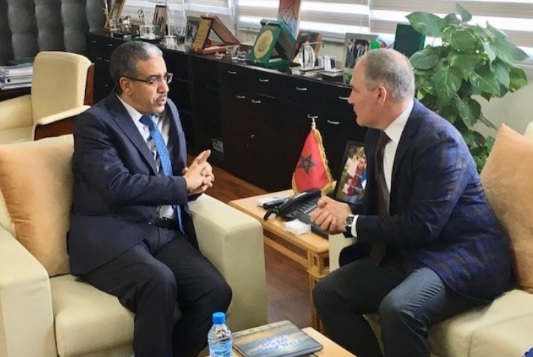Washington Examiner
John Siciliano
Environmental Protection Agency chief Scott Pruitt is in Morocco this week to “update” environmental cooperation under the U.S.-Morocco Free Trade Agreement to include an option to import more natural gas from the United States.
Energy Secretary Rick Perry has typically been in the lead in discussing the Trump administration’s “energy dominance” vision with foreign leaders on importing more natural gas and coal from the United States. Perry announced $18.5 million in funding for an offshore wind energy research consortium on Tuesday.
The EPA said Pruitt’s natural gas conversations in the North African kingdom came on the heels of discussions he led in the capital Rabat on sharing “U.S. best practices for solid waste management, public participation and crisis communication pursuant to the former Environmental Work Plan,” which was established under the 2004 trade agreement.
“These meetings allowed us to directly convey our priorities and best practices with Moroccan leaders, as well as identify opportunities for continued cooperation, as our two countries further talks around the Environmental Work Plan,” said Pruitt. “We are committed to working closely with countries like Morocco to enhance environmental stewardship around the world.”
From the meetings, it was not clear how much Morocco is interested in buying liquefied natural gas, or LNG, from the United States. Moroccan officials used the opportunity to show off the large investments it has made in solar energy.
After talking about LNG, Pruitt toured the IRESEN Green Energy Park, “where he saw firsthand the work being done to promote environmental innovation including solar energy across Morocco,” the EPA said.
Morocco had been the head of the COP22 United Nations climate change talks last year and is a signatory to the 2015 Paris climate change accord, which marked its two-year anniversary Tuesday. Nevertheless, the country is making investments to begin importing LNG and start building natural gas-fired power plants. It still uses a lot of coal even as it transitions to more solar and is looking to diversify its fuel mix for electricity.
Morocco’s state-run power utility announced this year that it is working with investment bank HSBC to examine inroads for and LNG-to-power facility at Jorf Lasfar. The plans for building the combined import terminal and natural gas-fired power plant are still in the consultation phase. If built, the $4.6 billion facility would allow Morocco to start importing several billion cubic meters of natural gas beginning in 2025, according to reports.
Morocco is a predominant import of oil and other fuels, with little in the way of its own production capacity. It has examined the potential for hydraulic fracturing in the country, but has turned to renewables to reduce its dependence on energy imports.







